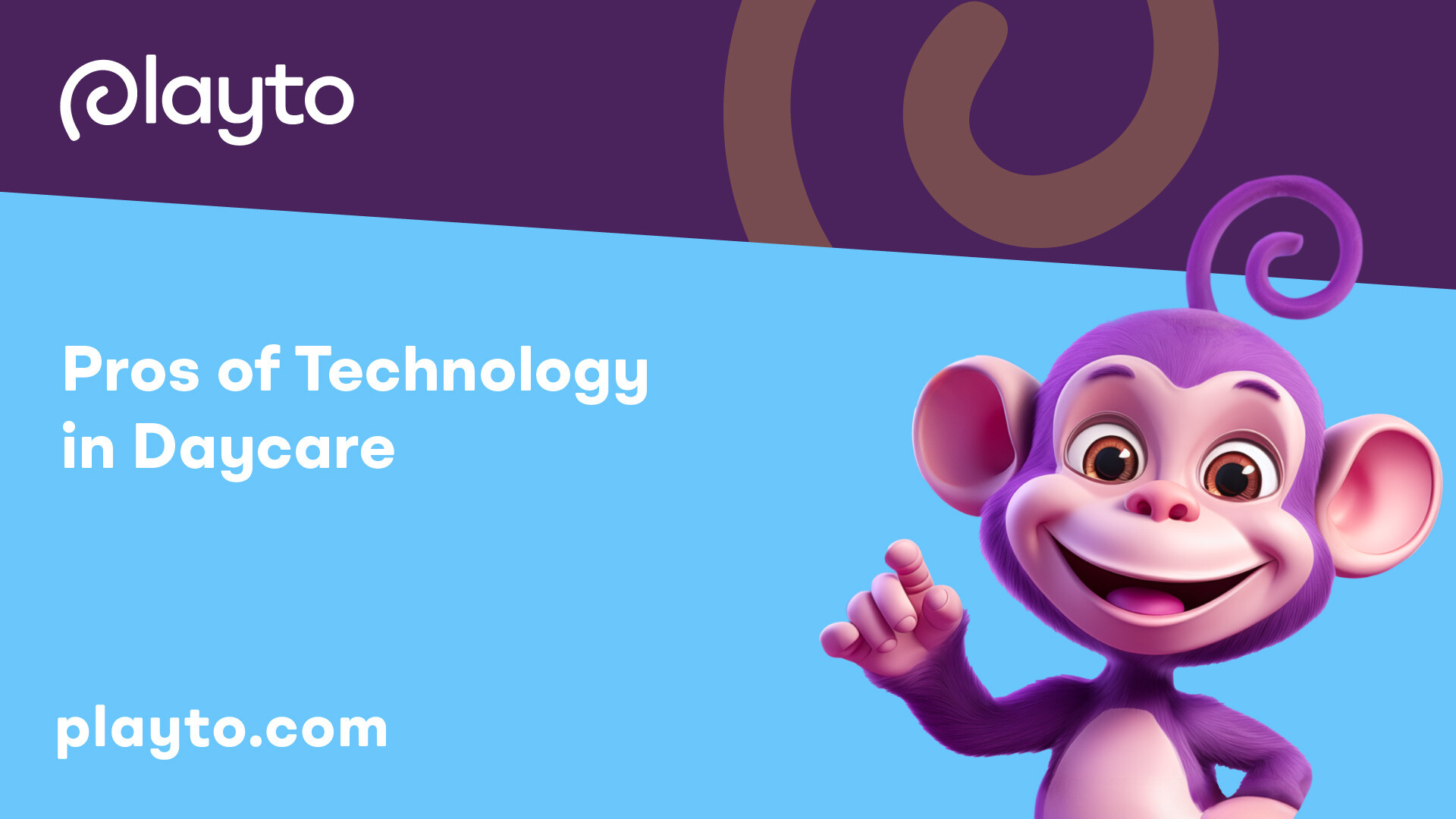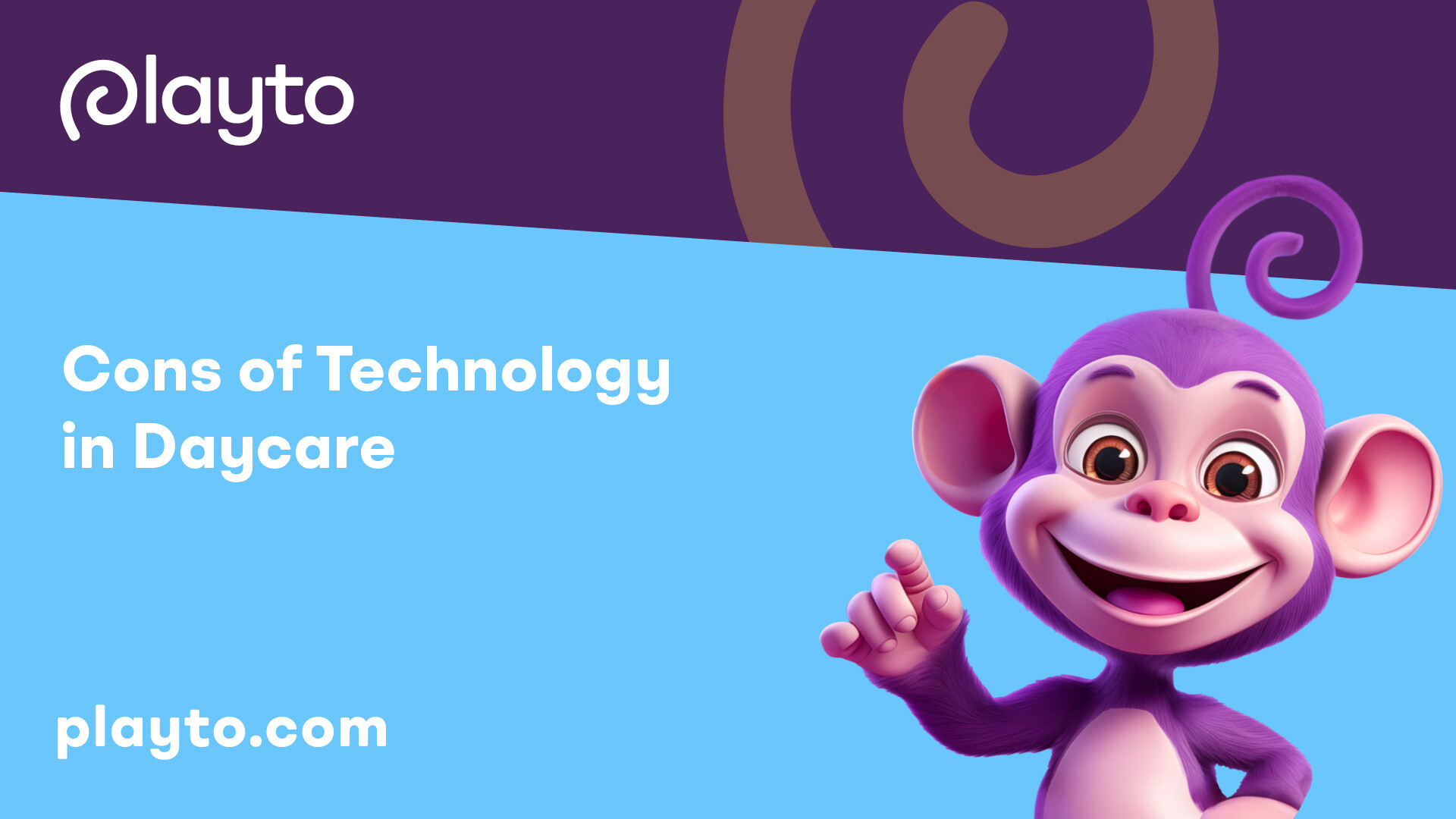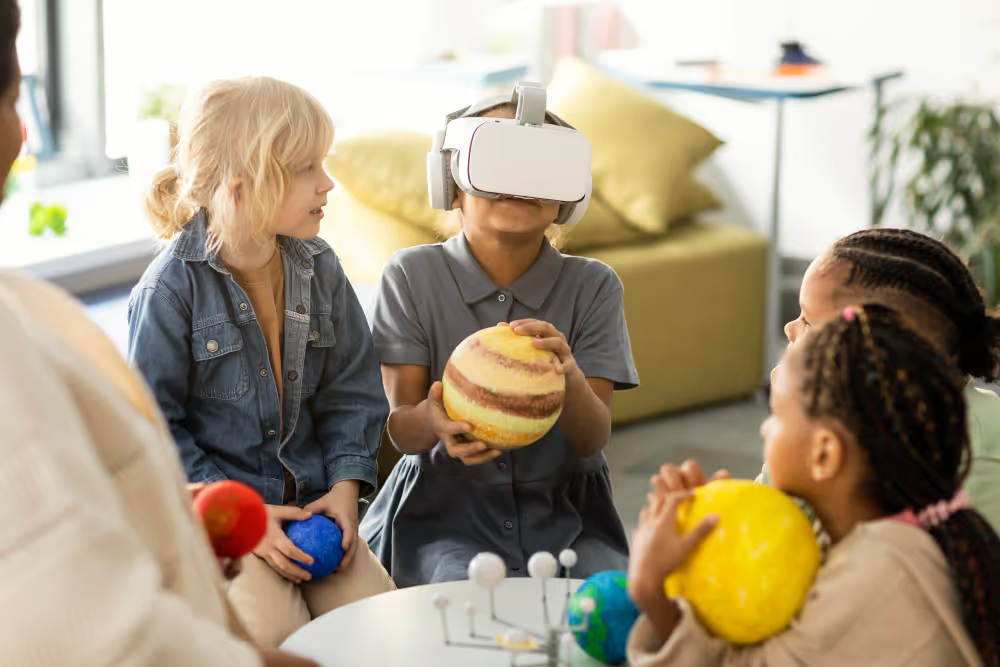Technology Use in Daycare

In today's digital age, technology plays a significant role in various aspects of our lives, including early childhood education. However, it is essential to consider the impact of technology use in daycare settings, especially on young children and the duration of structured programs.
Impact on Young Children
Young children, particularly those under the age of five, have shorter attention spans and are still developing their cognitive abilities. Prolonged exposure to technology and excessive stimulation can have adverse effects on their behavior and learning abilities. Studies have shown that children in structured programs can experience overload and stress after approximately five hours, leading to emotional deregulation and potential negative effects on their overall well-being.
Preschool children may find it challenging to spend an entire day in a classroom with many other children, as it can become overwhelming and result in challenging behaviors and emotional outbursts. Therefore, it is crucial to strike a balance between technology use and other developmentally appropriate activities to ensure a well-rounded daycare experience.
Duration of Structured Programs
According to experts, children under five do not belong in a structured program for more than a few hours per day. The average preschool child typically lasts about five hours at daycare before experiencing emotional deregulation. Extended periods in structured programs can lead to overload and stress for young children, affecting their behavior and learning abilities.
While technology can enhance learning opportunities and engage children in educational activities, it is crucial to consider the appropriate duration of structured programs. Instead of relying solely on technology, daycare programs should provide a balanced mix of activities that promote social interaction, physical play, and creative expression. This approach allows children to develop their cognitive, social, and emotional skills holistically.
When incorporating technology into daycare programs, it is important to follow guidelines and best practices to ensure responsible and effective use. The Department of Education provides principles for technology use in early childhood education, emphasizing the quality of content, context of use, and opportunities for relationship development. By following these guidelines and considering the individual needs of each child, daycare providers can create a technology-rich environment that supports learning and development.
In the next sections, we will explore the pros and cons of technology use in daycare settings and provide guidelines for responsible technology integration to ensure a positive and effective learning experience for young children.
Pros of Technology in Daycare

When used appropriately, technology can bring numerous benefits to the daycare setting. In this section, we will explore two key advantages of technology in daycare: enhancing learning opportunities and supporting multiple learning styles.
Enhancing Learning Opportunities
Technology in daycare can act as a powerful tool to enhance learning opportunities for young children. By incorporating educational apps, interactive software, and digital resources, educators can provide a wide range of engaging and interactive activities. Technology allows for the integration of multimedia elements, such as videos, images, and audio, which can captivate children's attention and facilitate comprehension.
One of the advantages of technology is its ability to cater to different learning styles. According to Brightwheel, technology enables educators to create lessons that address the needs of visual, auditory, reading/writing, and tactile/kinesthetic learners. This variety in teaching methods can enhance the educational experience for young children.
By incorporating technology into the curriculum, educators can introduce age-appropriate educational content that aligns with the developmental needs of the children. For example, interactive storytelling apps can foster a love for reading and encourage language development. Math games and puzzles can help young learners develop problem-solving and critical thinking skills. The inclusion of technology in daycare settings can expand the range of learning opportunities available to children, providing them with a broader foundation for their educational journey.
Supporting Multiple Learning Styles
Children have diverse learning styles, and technology can be a valuable tool for catering to these differences. Technology allows educators to create lessons that engage visual, reading/writing, auditory, and tactile/kinesthetic learners, as highlighted by Brightwheel. For visual learners, interactive visuals and videos can bring concepts to life. For auditory learners, educational apps and programs with audio components can reinforce learning through sound. Reading/writing learners can benefit from digital resources that promote literacy skills, such as interactive reading activities and word games. Tactile/kinesthetic learners can engage with touchscreens, interactive elements, and hands-on activities provided through technology.
By incorporating technology that supports multiple learning styles, educators can create a more inclusive and engaging learning environment. This approach acknowledges the diverse needs and preferences of young learners, fostering a positive and effective educational experience.
To ensure the responsible integration of technology in daycare, it is essential for educators to carefully select age-appropriate and high-quality digital resources. Additionally, they should follow guidelines and best practices outlined by organizations such as the Department of Education and NAEYC. By doing so, educators can harness the benefits of technology while maintaining a balanced and holistic approach to early childhood education.
In the next section, we will explore the potential challenges and concerns associated with technology use in daycare.
Cons of Technology in Daycare

While technology can offer various benefits in a daycare setting, it also comes with potential drawbacks and concerns that need to be carefully considered. Here are two key cons associated with the use of technology in daycare: potential health concerns and negative effects on development.
Potential Health Concerns
There have been concerns raised regarding the use of passive, non-interactive technology and screen media in early childhood programs, due to potential health issues such as obesity and irregular sleep patterns. Public health organizations and child advocacy groups recommend against the use of passive screen media.
High exposure to background TV has been found to have negative effects on language use and acquisition, attention, cognitive development, and executive function in children younger than 5 years. Research has also shown associations, although not direct causal relationships, between heavy early screen exposure and significant language delays. Additionally, recent evidence suggests that elevated levels of TV exposure at age 2 may be associated with self-reported victimization, social isolation, proactive aggression, and anti-social behaviors in middle childhood NCBI.
To mitigate these potential health concerns, it is important to monitor and limit screen time for young children, ensuring it is used in moderation and with high-quality, interactive content. It is also crucial to encourage a balanced approach that includes physical activities, social interactions, and other enriching experiences.
Negative Effects on Development
The passive use of screen media in early childhood programs has raised concerns about its impact on children's learning and development. Excessive media consumption and exposure to inappropriate content have been associated with issues such as focus and attention problems, increased screen time, and potential negative effects on cognitive development.
While technology and media, when used intentionally with high-quality educational content, have the potential to enhance children's experiences and support teaching and learning, it is essential to strike a balance. Overuse of technology and excessive media consumption can hinder children's development by replacing real-world interactions, limiting creativity, and impeding the development of important skills such as problem-solving, critical thinking, and social-emotional development NAEYC.
To address these concerns, daycare centers should establish clear guidelines and limitations for the use of technology. It is important to ensure that technology is used as a tool to supplement and enhance learning experiences, rather than replacing important hands-on activities and face-to-face interactions. By promoting a balanced approach and incorporating a variety of developmentally appropriate activities, daycare providers can help mitigate the potential negative effects of technology on children's development.
Guidelines for Technology Use
When it comes to incorporating technology in daycare settings, it is important to follow guidelines and best practices to ensure the optimal use and benefits for young children. The Department of Education has established principles for technology use in early childhood education, and understanding these principles can help inform the integration of technology in daycare settings.
Department of Education Principles
The Department of Education lists four guiding principles for using technology in the classroom. These principles emphasize that technology should be used to:
- Increase access to learning opportunities for all children.
- Strengthen relationships among parents, families, educators, and children.
- Be more effective for learning when adults and peers interact or co-view with young children.
- Support children's active engagement with learning experiences.
By adhering to these principles, daycare providers can ensure that technology is utilized in a way that enhances the learning environment and supports children's development.
Best Practices for Integration
To effectively integrate technology in daycare settings, it is important to consider best practices that promote positive and meaningful experiences. The National Association for the Education of Young Children (NAEYC) and the Fred Rogers Center emphasize the following best practices:
- Focus on content, context, and individual needs: Technology and media should be used intentionally with high-quality content created for educational purposes. Caregivers should consider the appropriateness of the content, the context in which it is used, and the individual needs of each child.
- Promote active engagement: Children should have control over the medium and outcome of their technology experiences. They should be encouraged to explore the functionality of tools and engage in pretend play, imagining how technology might be used in real life.
- Limit technology use for young children: For children aged 0-2, technology use in early learning settings is discouraged. Instead, families can use technology in active ways to promote relationship development, such as video chatting with relatives. However, children with disabilities may use technology as assistive devices to communicate or access learning opportunities.
- Set appropriate limits on screen time: The American Academy of Pediatrics (AAP) recommends that children aged 2-5 have a maximum of one hour of technology use per day. It is important to consider the quality of content, the context of use, and opportunities for relationship development. Parents and early educators can use technology as a supplement to real-world interactions, such as using educational apps at the zoo.
- Encourage adult involvement: Research shows that children learn more from technology when parents or early educators watch and interact with them while using technology. Adult involvement can increase active use of technology and enhance learning outcomes for young children.
By following these best practices, daycare providers can ensure responsible and effective integration of technology in the learning experiences of young children. Technology should be seen as a tool that enhances communication, documentation, and inquiry-based learning, while promoting technological literacy and creativity among preschoolers.
By understanding the Department of Education principles and implementing best practices, daycare providers can create a technology-rich environment that supports children's learning, engagement, and development. It is crucial to strike a balance between technology use and other important aspects of early childhood education, such as reading, play, and social interactions.
To learn more about specific aspects of daycare, such as technology use, reading, and emergency preparedness, explore our articles on the role of technology in daycare learning, the importance of reading in daycare settings, transitioning from home care to daycare, and daycare emergency preparedness plans.
Technological Literacy in Preschool
In today's digital age, developing technological literacy in preschool is becoming increasingly important. By introducing Information and Communication Technology (ICT) in early childhood education, children can acquire essential skills and capabilities that will benefit them in the future. In this section, we will explore two key aspects of technological literacy in preschool: developing ICT capability and encouraging creativity.
Developing ICT Capability
Integrating ICT in preschool can help develop technological literacy and ICT capability through context-driven activities in the early years curriculum. By incorporating software that is content-free and intellectually challenging, children can acquire fundamental ICT skills while engaging in educational and interactive experiences [3].
Preschoolers can learn to navigate and interact with various digital tools, such as word processors and spreadsheets, which not only enhance literacy and numeracy learning but also foster the development of their ICT capabilities. Through guided activities and hands-on exploration, children can begin to understand the functionalities of different software and become comfortable using technology as a tool for learning and expression.
Encouraging Creativity
Technology in preschool education can also serve as a catalyst for creativity. By providing opportunities for young children to use drawing and painting programs and apps, educators can encourage self-expression and artistic exploration. These platforms allow children to experiment with colors, shapes, and textures, fostering their creativity and imagination [3].
Digital play is another avenue for promoting creativity in preschool. Quality and appropriate ICT resources can be utilized to create a digital world where children engage in role play, problem-solving, and storytelling. This enables them to make sense of the digital environment while nurturing their creative thinking and social skills [3].
When given the opportunity, children readily engage in digital expression as they do with other art tools. They can explore photography, digital drawing, create movies, music, and animation, showcasing their creativity through various digital mediums [4].
By integrating technology into the preschool curriculum, educators can empower children to become technologically literate, fostering their ICT capability and encouraging their creative development. Through purposeful and guided use of technology, preschoolers can gain valuable skills and experiences that will prepare them for the digital world they will encounter in the future.
Responsible Technology Integration
When it comes to technology use in daycare, responsible integration is key to ensure it benefits children's learning and development. Two important aspects of responsible technology integration are supporting inquiry-based learning and enhancing communication and documentation.
Supporting Inquiry-Based Learning
Technology can be a valuable tool in supporting inquiry-based learning experiences in preschool classrooms. By providing children with access to child-friendly microscope attachments, informational videos, virtual tours, and opportunities to interact with experts around the world, educators can foster a robust inquiry experience.
Inquiry-based learning encourages children to explore new knowledge, ask questions, and seek answers. Technology can help facilitate this process by providing interactive and engaging resources that spark curiosity and enable children to delve deeper into topics of interest. By incorporating technology into inquiry-based learning, daycare providers can create meaningful learning experiences that promote critical thinking, problem-solving, and a love for learning.
Enhancing Communication and Documentation
Technology also plays a vital role in enhancing communication and documentation in daycare settings. Educators can use digital tools to document and showcase children's learning, maintain communication with families, and enhance curriculum resources. Immediate review of children's work, reflection, collaboration, and sharing with families can be facilitated through technology, bridging the gap between home and school contexts and fostering language and literacy skills.
By leveraging technology, teachers can capture and share moments of children's learning, providing families with a window into their child's educational journey. This helps to strengthen the connection between parents, families, educators, and children. Additionally, digital tools can serve as valuable resources for educators, offering access to a wide range of educational materials, curricular support, and professional development opportunities.
To ensure responsible technology integration in daycare, it's important to be mindful of the quality and appropriateness of the content used. High-quality educational resources and age-appropriate materials should be selected to maximize the benefits of technology while minimizing potential risks. By using technology as a tool for learning, communication, and documentation, daycare providers can create a supportive and enriched environment for children's educational growth.
When integrating technology, it's crucial to follow the guidelines set forth by the Department of Education, which emphasize that technology should be used as a tool for learning, increase access to learning opportunities, strengthen relationships among parents, families, educators, and children, and be more effective when adults and peers interact or co-view with young children [5]. By adhering to these principles and incorporating technology in a responsible and intentional manner, daycare providers can harness its potential while prioritizing children's learning and development.
References
- [1]: https://thefifth.medium.com
- [2]: https://tech.ed.gov
- [3]: https://www.linkedin.com
- [4]: https://www.naeyc.org
- [5]: https://mybrightwheel.com
